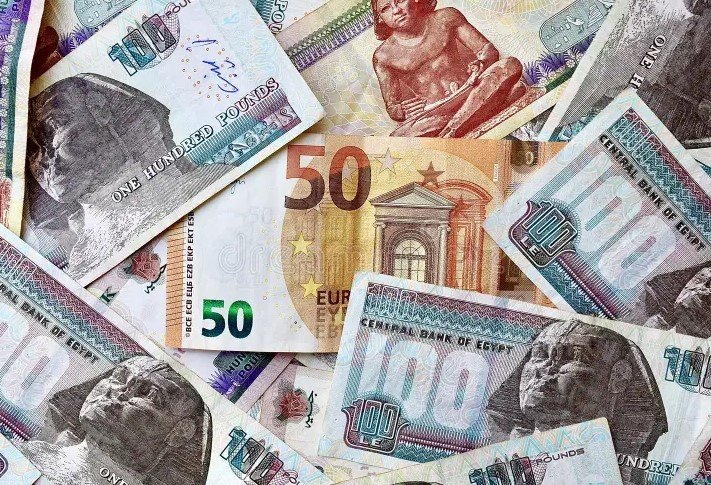Currency eases to EGP 56.25 amid shifting demand, calmer tourism inflows, and ECB policy cooling bets
The euro pulled back slightly against the Egyptian pound on Wednesday, settling at EGP 56.25, as a wave of mid-summer strength in the European currency gave way to a more cautious mood in Cairo’s currency markets. The dip follows several sessions of appreciation that had pushed the euro higher in local trading, fueled in part by robust tourism receipts and speculation about Eurozone interest rate hikes.
But those tailwinds appear to be losing steam.
According to the Central Bank of Egypt (CBE), the official exchange rate closed at EGP 56.61 for buying and EGP 56.25 for selling, marking a small but notable pullback from the week’s earlier levels.
From Rally to Retreat
For much of July, the euro had been gaining ground in Egypt, lifted by:
-
Strong inbound tourism demand from the EU,
-
Seasonal euro purchases by Egyptian banks and importers,
-
Hopes that the European Central Bank (ECB) would tighten policy again.
That momentum, however, seems to have fizzled.
Retail banks are now adjusting rates in response. The National Bank of Egypt (NBE) and Banque Misr, two of the country’s largest state-owned lenders, quoted the euro at EGP 57.17 to buy and EGP 57.41 to sell—a shade lower than earlier in the week.
Some dealers said the euro’s descent is more of a “cooling” than a reversal.
“The market isn’t rushing into euros anymore,” one Cairo-based currency broker said. “Tourism is stabilizing, and ECB policy is looking less hawkish than expected.”

Slower Demand After Tourism Surge
Earlier this month, Egypt saw a rush of euro liquidity—thanks in large part to European tourists pouring into Red Sea resorts during peak travel weeks. That influx had bolstered both the demand and supply sides of the currency market, pushing the euro to its highest level against the pound since early May.
But with the summer travel wave plateauing and school-year planning beginning in Europe, tourist inflows are now tapering.
Also notable: speculative demand for euros among Egyptian investors and businesses appears to have waned. Importers who rushed to convert EGP into euros ahead of possible price hikes are reportedly holding back, as European inflation numbers continue to soften.
ECB Surprise Adds Pressure
The euro’s weakness in Egypt also mirrors a broader international trend: the ECB held interest rates steady last week, disappointing markets that had priced in a more aggressive stance to curb inflation.
That decision weighed on the euro globally—and filtered into Egyptian markets within 48 hours, according to traders familiar with CBE monitoring patterns.
Here’s how the euro performed across key regional banks this week:
| Bank Name | Buy Rate (EGP) | Sell Rate (EGP) |
|---|---|---|
| Central Bank | 56.61 | 56.25 |
| National Bank of Egypt (NBE) | 57.17 | 57.41 |
| Banque Misr | 57.17 | 57.41 |
| Commercial Intl Bank (CIB) | 57.09 | 57.33 |
What to Watch Next
Currency strategists say the euro-pound pair in Egypt could remain range-bound unless a major fiscal event or monetary signal shifts sentiment.
“There’s not a lot of fuel in either direction right now,” said a senior FX analyst in Cairo. “If the CBE stays neutral and the ECB does nothing bold, we could drift sideways for a few weeks.”
That said, several potential triggers remain:
-
New euro-denominated remittance flows from Egyptians abroad,
-
August inflation data from both Egypt and the EU,
-
Any further devaluation pressure on the Egyptian pound from debt refinancing discussions with the IMF.
So while this dip may be minor, it’s also a sign that local sentiment is watching global moves—and reacting faster than before.
